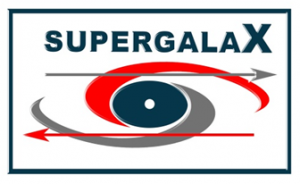Research
Research interests
Research in the general field of quantum many-body theory and its application in condensed matter with confined geometries and related systems. We are particularly interested in the study of strongly correlated low-dimensional electronic systems with various many-body ground states, non-trivial topology of the band structure, non-equilibrium phenomena, and novel states of matter formed at interfaces.
We are engaged in the following projects:
SPP 2137 – Topological Spin Phenomena in Real-Space for Applications

Picture source: Website SPP 2137
The main objective of the priority program on skyrmionics is fundamental research towards the development of devices and applications based on topological spin solitons, alluding to skyrmions as most prominent examples. It is motivated by the discovery of skyrmion lattices and isolated skyrmions in magnetic materials exhibiting bulk or interface inversion-asymmetry and associated Dzyaloshinskii-Moriya interaction. Skyrmions can be found in bulk compounds and tailored thin film and nano-systems.
The main aspects to be addressed within SPP2137 concern non-trivial topological characteristics (e.g., skyrmions, antiskyrmions, hybrid-particles composed of skyrmions and magnetic singularities) and associated solitonic properties stabilized by anti-symmetric (chiral) spin-orbit coupling and additional interactions. The research activities focus on three general areas:
-
- New materials and tailored design of static and dynamic properties of topological spin solitons
- Topological spin solitons in nanostructured systems
- Topological spin solitons in artificial composite systems
The priority program has an interdisciplinary character. It aims to connect the spintronics community with fundamental research on new materials, as well as engineering, mathematics, and chemistry-related aspects. The progress on skyrmionics is gained through mathematical reasoning, micromagnetic and atomistic simulations, computational and theoretical condensed matter physics, cutting edge synthesis techniques, advanced and highly specialized imaging and characterization methods, supplemented with engineering strategies developed for the design of nano-electronic devices.
Supergalax

Picture source: SupergalaX Website
The ambition of the project is to develop and realize conceptually novel and practical quantum limited SQN detector capable to reveal single MW photons for a photon frequency of ~10 GHz with the Heisenberg limit of sensitivity and the quantum limit noise with a view to apply it to the QUAX (QUaerere AXion) experiment, an INFN funded search for galactic axions by means of both ferromagnetic and normal “haloscopes” [1][2].
The specific objectives of our project are as follows:
-
- Development of a single microwave photon detector based on moderate size networks of interacting superconducting qubits utilizing both transmons and flux qubits.
- Development of the Parametric Down Conversion (PDC) microwave photon source based on the Traveling Wave Josephson Parametric Amplifier (TW-JPA) with a clock frequency of few kHz
- Integration of the PDC MW photon source with two single photon SQN detectors in a common setup to develop an heralded single photon source and to carry out the test of the detectors at single MW photons.
- Installation of the single photon SQN detector integrated with the single photon source as a calibration element in a He free refrigerator of the QUAX Collaboration.
- Experimental study of feasibility of the single microwave photon SQN detector for the “haloscope” type of axion searching using the axion conversion in a magnetic field.
[1] Barbieri et al., Phys. Dark Univ. 15, 135 (2017).
[2] N. Crescini et al., Eur. Phys. J. C 78, 703 (2018).
Imaginary time instantons and pseudogap state in superconducting cuprates.
We investigate possibility of existence and properties of a new state of the matter characterized by an order parameter oscillating as a function of imaginary Matsubara time. Such a state contrasts states with time-independent order parameters entering Landau- type theories. The periodic imaginary time structure characterizing the order parameter is a chain of instantons and has a total length 1/T, where T is temperature. This „instanton crystal“ can arise in a system of interacting fermions and lead to a gap in their spectrum. At the same time, the thermodynamic average of the order parameter is equal to zero in the main approximation and the latter cannot be directly observed.
It is proposed that the imaginary time instanton order parameter and corresponding thermodynamic state can appear in an effective „spin-fermion model with overlapping hot spots“ developed in our recent publications for description of low temperature properties of superconducting cuprates. We suggest that the imaginary time instanton state can be a good candidate for describing still mysterious „pseudogap state“ in superconducting cuprates.
Our plan is to investigate the „imaginary time instanton crystal“ starting with the spin-fermion model with the overlapping hot spots, compare the results with existing experiments and propose new ones.


